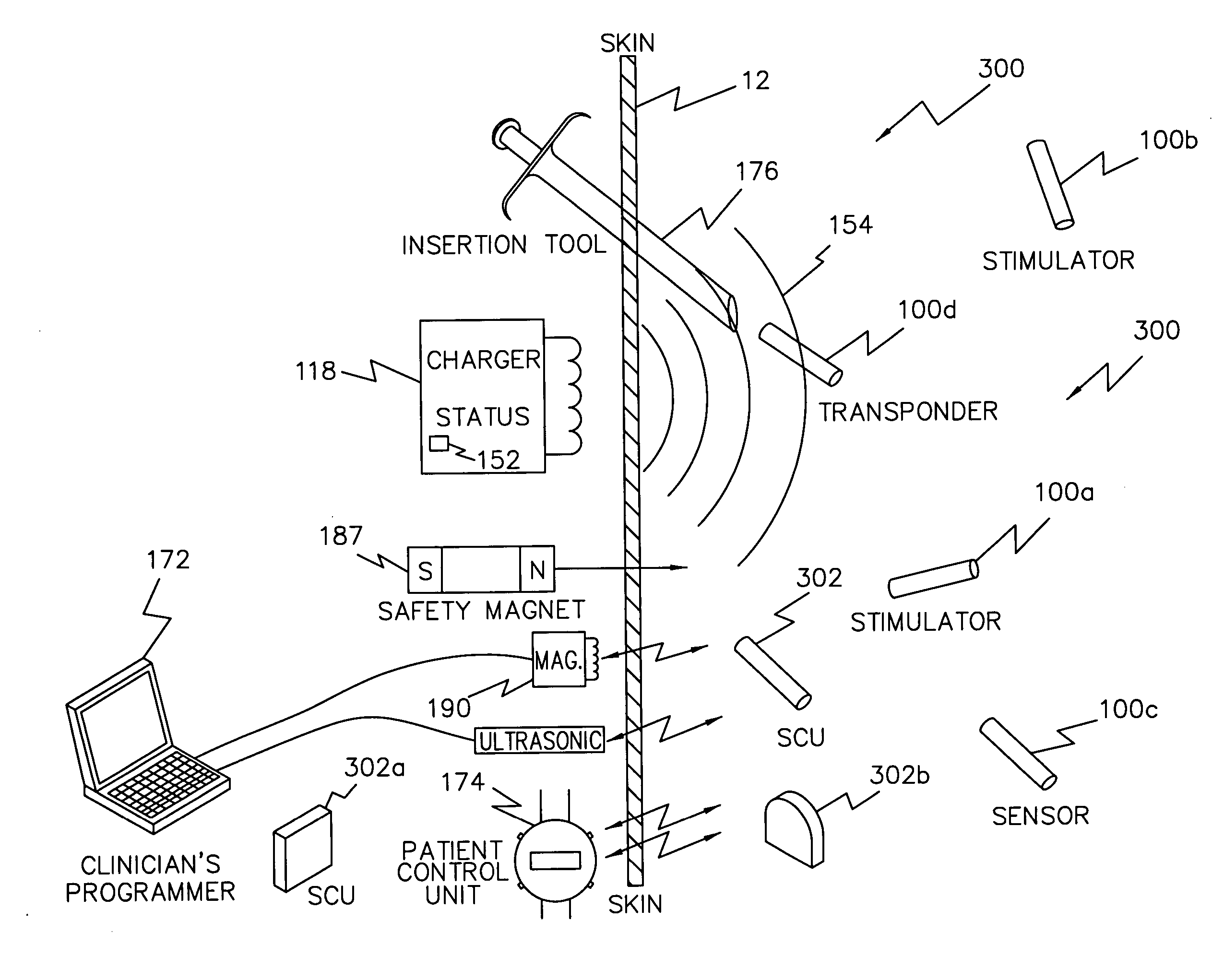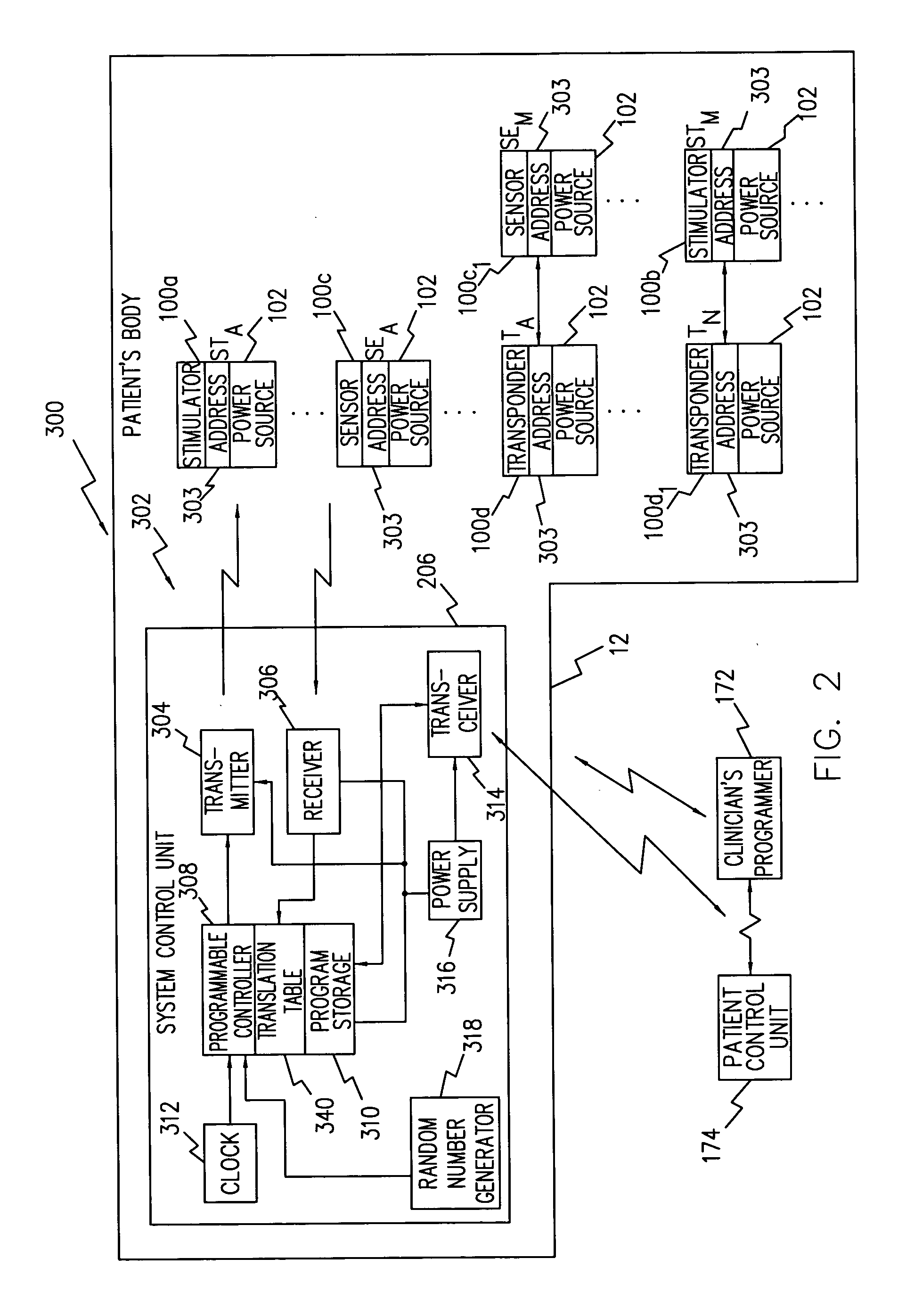Diaphragmatic pacing with activity monitor adjustment
a technology of diaphragmatic pacing and activity monitor, which is applied in electrotherapy, therapy, etc., can solve the problems of insufficient current dps system ( and inability to adjust respiration at a fixed rate)
- Summary
- Abstract
- Description
- Claims
- Application Information
AI Technical Summary
Benefits of technology
Problems solved by technology
Method used
Image
Examples
exemplary embodiment 400
[0062]FIG. 9 shows a first exemplary embodiment 400 of the present invention. In FIG. 9, a pair of the aforedescribed implantable devices 100R and 100L (using the leaded BION® option) are coupled respectively to the right 402 and left 404 hemidiaphragm motor points, using Peterson electrodes 405, 405′ or the like. Within at least one of these implantable devices 100 is an accelerometer 406 to measure patient movement (corresponding to physiological need). Accelerometer 406 is coupled to the controller 130 and each of them preferably receive power from an internal battery 104 (see FIG. 3A). Preferably, a communication link 408, e.g., an RF, modulated magnetic field, etc., is established between these devices to allow them to essentially synchronize their pulse generators to essentially concurrently stimulate the right 402 and left 404 hemidiaphragm motor points. Accordingly, the pacing rate for each of these implantable devices 100 is adjusted to correspond to the determined physiolo...
exemplary embodiment 420
[0066]FIG. 11 shows an alternative exemplary embodiment 420 in which an external DPS stimulator 422 is percutaneously attached, e.g., via an epigastric port, to internal electrodes 405, 405′ at the right 402 and left 404 hemidiaphragm motor points. Preferably in this embodiment, accelerometer 406 is contained within external DPS stimulator 422 and data measured by this accelerometer 406 is used to control the diaphragm stimulation rate. Alternatively or additionally, a finger cuff pulse oximeter 424 may be coupled to the DPS stimulator 422 or percutaneously to oximeter 410 and this data may be used in the algorithm for determining the diaphragm pacing rate.
[0067] Accordingly, what has been shown is a system and method that provides adjustable diaphragmatic pacing to a patient having an associated neurological deficit wherein the adjustments automatically occur in response to the patient's physiological need. While the invention has been described by means of specific embodiments and...
PUM
 Login to View More
Login to View More Abstract
Description
Claims
Application Information
 Login to View More
Login to View More - R&D
- Intellectual Property
- Life Sciences
- Materials
- Tech Scout
- Unparalleled Data Quality
- Higher Quality Content
- 60% Fewer Hallucinations
Browse by: Latest US Patents, China's latest patents, Technical Efficacy Thesaurus, Application Domain, Technology Topic, Popular Technical Reports.
© 2025 PatSnap. All rights reserved.Legal|Privacy policy|Modern Slavery Act Transparency Statement|Sitemap|About US| Contact US: help@patsnap.com



